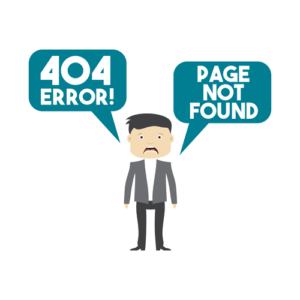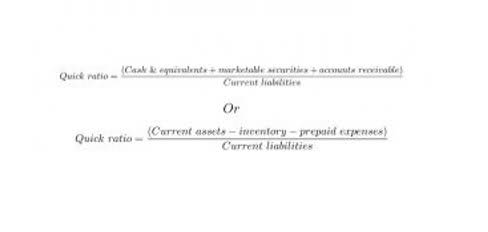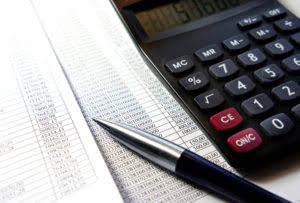
That’s why it’s crucial to maintain a contingency or emergency fund. It’s your financial safety net, ready restaurant cash flow to catch you when unexpected expenses come knocking. Inventory is one of the largest expenses in the restaurant industry.
- Creating a monthly cash flow statement helps you track the money going in and out of your business and helps prevent surprises.
- To manage cash flow effectively, you can request extended payment terms during the low season or discounts for early payments during the high season.
- They can also help you out at tax time by letting you know how much sales tax you owe, and they can remit these taxes on time to avoid any costly penalties.
- With its robust capabilities and user-friendly interface, Lineup.ai empowers restaurant owners to take control of their financial future.
Understanding Your Restaurant’s Cash Flow Statement

An outsourced bookkeeper can provide you with customized reports based on your individual needs, allowing you to make better decisions about your business. They can also help you out at tax time by letting you know how much sales tax you owe, and they can remit these Bookstime taxes on time to avoid any costly penalties. An outsourced bookkeeping team can help you choose the best accounting software and tools for your business and help you set it all up, migrate your data and integrate it all with other apps. They can also help you create dashboards and custom reports to enable you to make data-driven business decisions. Your outsourcing experts know how to use advanced systems and can automate your processes and transactions faster and more accurately than if you were to handle these matters yourself. Also, since an outsourced team is based remotely, they will utilize cloud-based technology to communicate and manage your books, making it easier to access your company’s data from anywhere at any time.

Get the Right Balance with Payroll

Again, this will help you monitor shifts and payroll accordingly. If business slows down for weeks or it’s the off-season, your cash flow could be in trouble. Now, calculate all outgoing cash; loan payments, rent, utilities, payroll & taxes, inventory expenses, supplies, regular payments, and more. As crucial as cash flow forecasting is, it’s just one side of the coin.
Look for a bookkeeper who has knowledge and experience in the restaurant industry
- Plus, it will enable you to see a detailed list of all your expenses to decide where you can cut down to cope with any changes in revenue.
- For instance, if a business takes out a loan to generate cash to invest in expansion or purchase necessary equipment then it will be recorded here.
- It’s not about exact predictions, but about being prepared for what’s to come.
- Consider the potential impact on cash flow and weigh the benefits against the costs.
- As a CFO, Sarah is responsible for developing financial and operational strategies as well as relying on metrics to maintain or improve business performance along with building relationships with clients.
- An integrated restaurant accounting solution puts your AR and AP transactions alongside income, to give you a comprehensive overview of your accounts.
- Operators can utilize the cash flow statement both internally and externally.
Your cash flow forecast will include all of your revenue and expenses. Expenses will be broken down into fixed costs, such as your rent, loan payments, and insurance, and variable costs, such as payroll and food expenses. Understanding how cash moves in and out of your restaurant or pub is bookkeeping the first step towards creating a reliable cash flow forecast. If you don’t know how much money is being paid in or out from one month to the next, you won’t be able to make informed decisions about purchasing equipment, hiring staff, or planning for the long term.
- Accrual accounting offers better insights for strategic planning and financial reporting in the restaurant business.
- An annual budget is helpful, but a quarterly – or seasonal – budget is even better.
- You may improve your restaurant’s financial health by using a restaurant cash flow template and adhering to the best practices covered in this manual.
- You can improve your restaurant’s cash flow and maintain smooth operations by implementing the seven tips we’ve laid out above.
- It involves predicting the cash that will come in and go out of your business in a future period – could be the next week, month, or even year.
- If you’re ready to invest in support that will help you make informed decisions about managing your restaurant’s cash flow, consider getting in touch.

Other commercial credit products are offered by a variety of Bluevine’s third party partners. Bluevine is not involved in the issuance or servicing of these products. Deposits are FDIC insured up to $3,000,000 per depositor through Coastal Community Bank, Member FDIC and our program banks. Business checking with high-yield interest, perfect for restaurants. Incorporate a buffer for unforeseen circumstances, providing a safety net for unexpected expenses.
How to calculate your restaurant’s cash flow

A cash flow forecast considers a business’s financial information to produce a detailed estimate of its financial situation in the future. It looks primarily at payments coming in and expenses going out of the business, such as a restaurant. You need to keep track of daily sales and expenses to understand your restaurant’s cash flow patterns.
